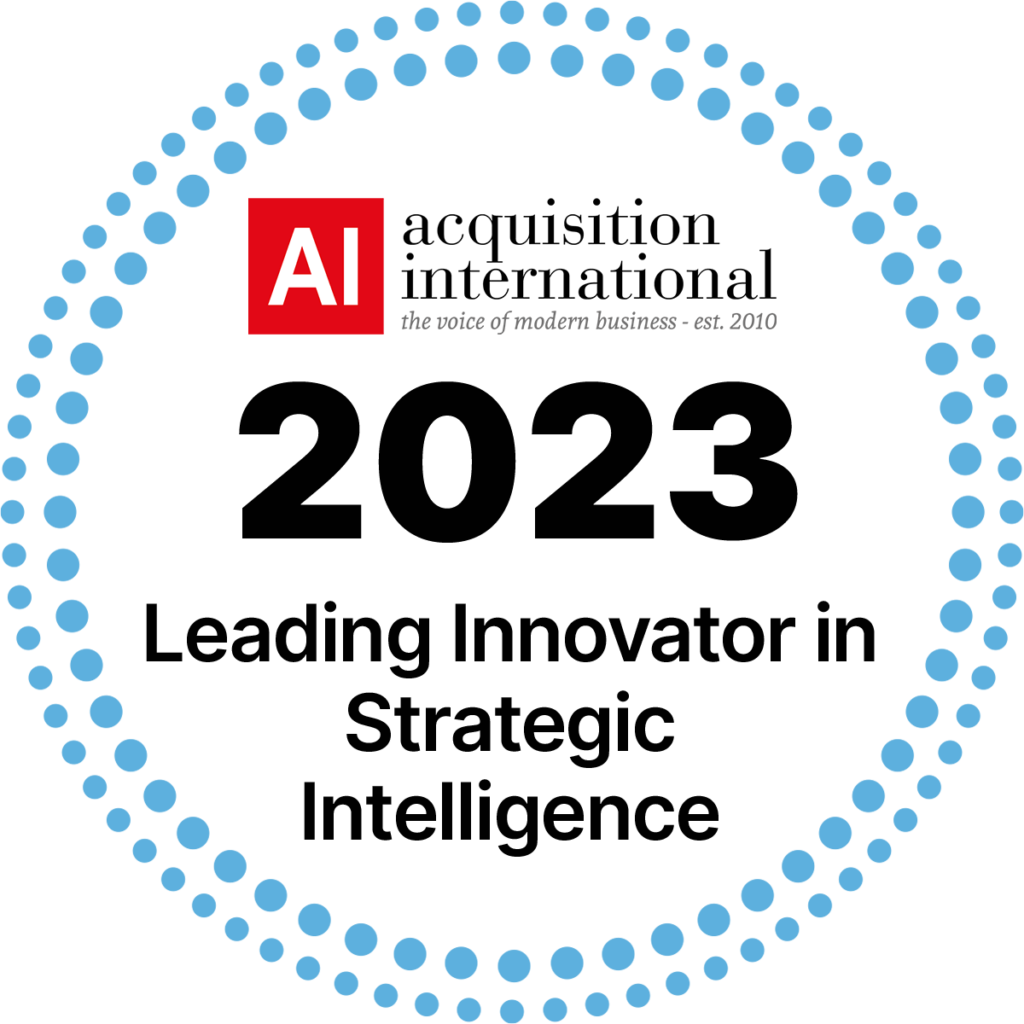Published: September 18, 2018
The transportation and freight industry affects nearly all other industries, so it’s important to be aware of new innovations in that industry. Technology already has – and will continue to have – an enormous influence on the way the trucking industry operates. Here are just two possibilities:
- What if you knew that there would be a lack of shipping capacity two years before it happened?
- What would happen if you could move product to customers faster than competitors?
Foresight is critical to a company’s competitive strategy and seeing potential future market changes helps keep businesses’ competitive intelligence functions high on the priority list.
A retiring workforce, new regulations, and equipment shortages have created capacity constraints and are likely years away from being solved. There are several trends that have significant impacts on the way goods are transported. Competitive intelligence functions help identify these potential changes and suggest ways to use them to a company’s advantage.
Here are four innovative trends in the trucking space and why they should matter to you:
On-Demand Freight
Technology will continue to advance in every market, and trucking and freight will be no exception. On-Demand Freight Services simplify the way drivers and customers connect. The concept is simple: companies/users find and connect with service providers quickly, easily, and transparently through websites and mobile apps. Making connections this way streamlines the logistics process for low and medium-volume customers, and it removes the need for middlemen, usually 3PLs and other transportation brokers. For example, Uber Freight has transformed the industry with their product, and there are others on the way, including UPS, which launched an on-demand fulfillment networked geared towared B2B e-commerce, matching customers with available warehouse space.
Above all, on-demand applications connect shippers (or owners/operators) to customers directly. As adoption and use accelerates, shipping dynamics will quickly change the way companies transfer products to customers.
Why it Matters
Currently, the use of these services is modest; however, as they develop, local shipments across the country (e.g., less than 300 miles) will see activity. The technology has the capability to deliver products to market faster and improve the execution of just-in-time delivery capabilities.
- Reducing the number of steps between the customer and shipper can change industry dynamics quickly. The technology under development is seeking to make this a reality.
- These applications can provide owners/operators further control of the freight market, leading to a notable power shift in the industry (think Porter’s 5 Forces).
- This technology has the potential to trigger new economic models for investors and companies seeking to support acceleration in this venue.
Electric Trucks
Most organizations understand the implications of electrically powered trucks; however, it’s probably unlikely that those who make strategic decisions have had an in-depth discussion of the advantages and disadvantages.
Electically powered trucks, while still under development, have the potential to change the cost structure of transporting goods. Fuel costs are commonly identified as the second highest cost, outside of driver compensation, to a fleet’s operation and are shared with customers (and consumers). Electric vehicles reduce or eliminate fuel costs in dramatic ways. In fact, many oil companies are closely monitoring the electrification market to determine the potential impact it will have on the U.S. gasoline and diesel market. If the technology advances, it can dramatically change the cost structure of moving cargo.
Why it Matters
Companies that offer price structures that no longer have fuel as the primary cost-driver can be dramatically different. Those who adopt them also put pressure on organizations that are not prepared to change.
Industries that rely on “business as normal” in the trucking space can see change in many industry segments. Truck-component suppliers, fuel companies, service/repair businesses, and insurance companies are just a few that will be impacted initially. Once the technology is proven, the market shift will happen quickly.
New companies may quickly enter the space and as non-industry players enter, it can instantly change the definition of who might be a competitor. Electrification can be a barrier-lowering event and can upend the market as well as create new opportunities.
New services and infrastructure will be necessary to support electrically powered vehicle operations.
Autonomous Trucks & Vans
With organizations like Freightliner showcasing trucks that have passive drivers and others pushing for completely driverless solutions, the way that we currently deliver freight will change dramatically. The change will not be overnight, but as acceptance grows and confidence builds, change will accelerate. Several organizations are testing autonomous trucking solutions. Most notable and successful have been autonomous vans delivering groceries and small parcels to homes. These small-scale delivery examples can help pave the way for larger applications. Success in the use of autonomous automotive vehicles in the private sector will accelerate their use in trucking.
The economic impact of autonomous trucking makes the likelihood of its success more about when, not if. Consumer demand for receiving products faster is higher than ever and organizations desire to keep costs of inventorying product low. Autonomous trucks help make that a reality.
Why it matters
The ability to circumvent bottlenecks in the transportation industry today (driver shortages, fuel costs, driver hour limitations) can drastically change a fleet’s strategy and cost structure. This affects both companies operating in the space and companies using carriers for business.
Semi-autonomous vehicles, which are expected to be mainstream prior to full driverless technologies, can impact the industry just as much. Semi-autonomous trucks/vans can increase operation times, improve safety, and optimize fuel consumption. Companies having these tools first or as part of the strategy moving forward is beneficial for lowering fleet costs or rates to customers.
Similar to the use of electrically powered vehicles, autonomous trucking can impact companies that have operational strategies that do not adjust for change. Playing a role in how the industry develops (versus sitting on the sideline) can tilt elements in some organizations’ favor.
Driverless or semi-driverless environments will require investments, new ways of looking at the freight market, and technology integration that brings rewards.
Industry Consolidation on the Horizon
With the bottlenecks of driver shortages, hours available, and rising costs of operation , consolidation in the trucking and freight space is expected to accelerate in 2019. Although, it’s not only freight companies that will see change; the growth of technology, 3PLs, 4PLs, and telematics companies creates significant consolidation opportunities. Technology and telematics companies are of particular interest because they already offer sophisticated solutions and have a captive customer base. Acquisition of these players by OEMs, freight companies, or non-industry players will dramatically enhance available and future solutions.
Why it matters
For those operating in the market, competitive threats can quickly change and escalate, and acquisitions of technology providers can be significant.
It’s expected that large companies will get larger. Owning more of the value chain or shoring-up capability gaps/ coverage is expected as companies pursue lowering costs or eliminating bottlenecks.
Consolidation can bring chaos or interesting opportunities.
What to Consider
Here are some considerations to think about when seeking to connect competitive intelligence to the critical topic of transportation and logistics:
- Understand what your organization is doing regarding freight strategies and the possible opportunities the future holds. Chances are, topics like on-demand freight and consolidation may not be high frequency topics, although they should be.
- Identify whether your competition has adopted strategies to address new technology, such as electrification or on-demand freight technology in their businesses and, if you can, how it has worked for them. Early warnings here can make huge differences.
- Identify potential disruption risks in customer markets. How much exposure do your customers have? What percentage of your business do these customers represent?
- Analyze and monitor the market for major events, technology advancements, M&As, JVs, or product launches that can inform leadership of large market shifts. Pay particular attention to companies like Amazon or Uber making acquisitions. Many of these topics are changing the barriers to entry.
- Explore what investments are essential for the success of autonomous trucks/vans and determine how your organization can align investments. Initial investments can be minimal; however, when the technology is proven, preparation will allow for quick investment decisions that can put an organization well ahead of the competition.
- Most importantly, consider how your organization can turn this trend into a competitive advantage.
Conclusion
Technological changes accelerate rapidly in today’s world, and trucking and delivery organizations need to consider a myriad of options as this article suggests, but decision-makers have businesses to run. Proactive Worldwide is in business to help lighten the load.
About Proactive Worldwide, Inc.
Proactive Worldwide, Inc. is a global research and strategic intelligence consulting firm that provides evidence-based, constructive information within the competitive-intelligence, market-intelligence, and customer-insights domains. Anchored by primary-source research for over 22 years, PWW’s multilingual professionals assist clients with offerings that include – but are not limited to – market intelligence and competitive research services, market-entry and defense strategies, war-gaming workshops and scenario-planning events, and customer-experience and voice-of-customer studies. To learn more, visit http://www.proactiveworldwide.com.














